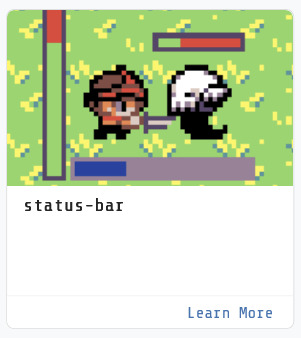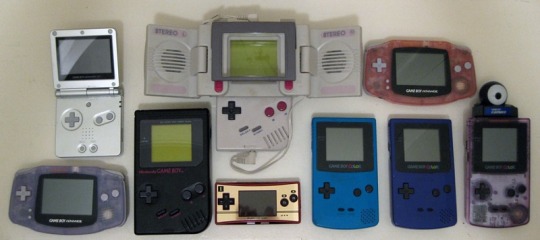#microsoft makecode arcade
Explore tagged Tumblr posts
Text

my beloved
#microsoft makecode arcade#makecode arcade#makecode#msma#msma status bar#microsoft makecode arcade status bar#makecode arcade status bar
3 notes
·
View notes
Text
game. play it or don't idk
you need a mouse (not a trackpad) to play it properly.
i'd reccomend selecting the controls option the first time and then the cutscene the second playthrough
0 notes
Text
someone on line for the bathroom gave me a QR code for the game they made and I think it’s so cool
Would totally check it out!!! Just putting it out here. Didnt get their name but hey if you’re on tumblr you complimented my pins and I hope Brian liked your thousands of bracelets you gave him
16 notes
·
View notes
Note
Hi it's the guest666 that got jumped by the entire lobby again. I've met more whimsy people after getting my partner into the game. So far my updates on playing is that shedletsky mains apparently really love beating up killers. I fear I also really like saw noob in a way that may be a lil less than normal and he's all I've been drawing.
the way you feel about sawnoob is how i feel about medkit phighting
ive drawn him at least 5 times this month, my rdrama pfp used to be medkit (before i decided on the hatred theme), i have a minecraft skin of him, and i plastered him all over my microsoft makecode arcade tutorial projects
6 notes
·
View notes
Text
I made a game as a coding example for kids with this exact premise years back
It was inspired by that other Tumblr post about how a roomba outside has no natural predators

This is so sad they won't let it outside and it can't forget what it saw 💔
22K notes
·
View notes
Text
Another throwback guys. Except this one isn't Sun and Moon themed.
So I really got around during COVID. I made a ton of things. Not just physical but also coding. And I was in a class at the time, and I was tasked with making a game. Not a hard one persay. But it had to be good enough to present to middle schoolers. And so, with my two-week timeframe to make a MakeCode Arcade game, that I did follow instructions for, for the most part, that is. The boss fight, which looks crappy now but it was my Roman empire when I was younger, I had made it mostly on my own so yk I was proud.
Anyway so basically I am doing summer school classes and I'm doing comp sci and well I was like 'I used to make a lot more than just circles' and well a friend helped me log into my old account and now I'm here. So now I'm posting for nostalgic purposes because if I lose it on my computer at least it will be on my account.
#fyi two kids won 100 dollars for beating this game#two middle school kids#afterwards i had to go around#and help these older kids do coding things#it was so awkward#but this is my baby#and technically#because i wrote the code#this is going under:#buzzywrites#because technically it's writing#if anyone plays it lmk i want to know if it still works#MakeCode arcade#coding#platformer#2d platformer#this thing is.. wow almost 4 years old#so dont judge guys#also B in code is technically e on your keyboard#so keep that in mind yall
0 notes
Text

hi!! im moaw!! i make pixel art and games! most of my work involves outreach for accessible education!
My website is HERE: https://www.moaw.art/
you can also find me on twitter! https://twitter.com/moawko
#you might recognize me from microsoft makecode arcade :)#or newgrounds work#or other silly things#PixelArt#pixel art#pixel illustration#GameDev#IndieGameDev#game dev
381 notes
·
View notes
Video
youtube
Criamos jogo do sapo cururu no MakeCode Arcade Microsoft - pule nas plat...
0 notes
Text
0 notes
Photo

The "Create a Music Player" project on Microsoft's MakeCode Arcade features a player with a button layout reminiscent of the Zune and even dons an iconic brown shell. This project is featured on the Empowering the Galaxy homepage, meant to promote Guardians of the Galaxy 3 as well as Microsoft's STEM-focused learning.
1 note
·
View note
Photo

Microsoft MakeCode Arcade Benim çok fazla kullanmadığım fakat kendini mesleğine adamış 😊sevgili bilişim öğretmenimden ismini öğrendiğim🖐️ biraz da kurcaladığım bir arcade oyun tasarlayan program ve kodlama öğretici MakeCode. Ülkemizde bazı okullarda deneyseti dahi yok.Bilgisayar ve internet olan herhangi bir yerde en azından ekstra masrafa gerek kalmadan üzerinde çalışma yapabilirsiniz.Eski 🐢🐢🐢Nintendo tarzı bazı yeni donanımları da destekliyor.Bilgilerinize...😊🖐️ (İzmir Province) https://www.instagram.com/p/CnmrOIntoy_/?igshid=NGJjMDIxMWI=
0 notes
Text
Kittenbot Meowbit Card-Sized Retro Game Computer Codable Console for Microsoft Makecode Arcade & Python Video Game Compatible Micro:bit Expansion Board for Robot Building Without Battery(Blue)
Kittenbot Meowbit Card-Sized Retro Game Computer Codable Console for Microsoft Makecode Arcade & Python Video Game Compatible Micro:bit Expansion Board for Robot Building Without Battery(Blue)
Price: (as of – Details) Description Meowbit is a card-sized graphical retro game computer with allows you coding with Makecode arcade and Python. In other words, it can use combines game programming with hardware devices. Meowbit is a card-sized graphical programming video game console designed for teenagers. It contains 1.8′ full-color screen, 6 x programmable buttons ,1 x buzzer, built-in…

View On WordPress
1 note
·
View note
Link
Recommended New Arrivals KittenBot® PowerBrick 10-in-1 Robotics Kit ID: 1526618 Meowbit -Codable Console for Microsoft Makecode Arcade ID: 1526615 Features: 1. Only 166g in ...
0 notes
Text
Microsoft TileCode creates arcade games
Microsoft TileCode is a game creation app that allows you to design, code, and play video games directly on low-cost Microsoft MakeCode Arcade gaming handhelds, as well as in the web browser.
From Board Games to Retro Video Games
We draw inspiration from board games with pieces that can move from one square of the board to a nearby square. Board games like checkers, also known as draughts, have been played for thousands of years. These games are affordable, and their rules are generally simple to understand, but the game play can be very engaging and rewarding. Over time, new games have been created by modifying the rules of existing board games.

In contrast, video games have been with us for just over a half-century, yet they constitute a multi-billion-dollar industry with billions of users. Handheld gaming devices, such as those shown below, as well as game consoles are primarily consumer devices. Creating games for these devices generally requires the use of a different computer, which contributes to a digital divide that needlessly separates producers and consumers.

Arcade devices
TileCode Vision
TileCode enables the process of game creation to take place on gaming handhelds themselves, instead of tablets/laptops/desktops, using just the four-way direction pad and the A and B buttons common to most handhelds, as shown above. With TileCode, we’ve already created a variety of retro video games, including Snake, Bejeweled, Pac-Man, Boulder Dash, and Sokoban (see examples in the banner).
TileCode aims to enable everyone to become creators of video games. TileCode leverages the concepts of board games (a board is a grid of squares, board pieces move from square to square, and game rules define the permitted moves) to introduce computational concepts through the medium of video games. Users start with a low floor as they are able to simply play a game and change one rule or elements of the game world. Once familiar with the application, players are provided with wide walls for creating different types of games. Ultimately, TileCode presents opportunities for high ceiling learning activities that challenge users to implement more complex games.
TileCode: Design and Coding
As shown on the TileCode home screen (below-left), there are eight game slots available to program. On an Arcade device, game assets are stored in the device’s persistent flash memory; in the browser, game assets are stored in browser-local storage. For each game, TileCode allows users to select game characters (sprites) and game background (tiles) from a gallery, modify the sprites and tile backgrounds, and create a game level by editing the game map, as shown in the three other screens:

Microsoft TileCode: screens
A TileCode program is a set of rules, each of which is associated with a sprite. A rule takes the form of a When-Do pair, as shown below on the left (screen labeled “code”). The When section visually describes a pattern/predicate over the 3×3 local neighborhood around the central sprite (the player sprite, in this case) to be matched against the tile map. The Do section contains commands that are sent to the identified sprite when the pattern matches.

Microsoft TileCode: example
The above rule fires when the user presses the right-dpad button, a player sprite is on the tile map, and there is grass on the tile to the right of the player. When these conditions hold, the rule sends the player sprite a move-right command. From this example we see how TileCode encourages the user to explore the relationships between the tile map and how the rules fire based on the patterns present on the map. In the rule coding screen (shown above), the user can play the game, return to the coding screen to change the rule, and see its effect on game play. She can also visit the tile map editor and make changes to the map to enable/disable the firing of a rule.
Opportunities for Creativity and Personal Expression
“What an individual can learn, and how he learns it, depends on what models he has available.” – Seymour Papert, Gears of my childhood.
TileCode presents a unique opportunity for youth to develop their own pixel art for tiles and sprites. It also engages users in new ways of thinking about game world design and the ways of creating different maps for different games. We draw inspiration from teachers who have students use basic classroom materials to express and refine their game designs before they get in front of a computer:

We are currently running a series of co-design workshops with families in order to better understand how students and parents make sense of video game mechanics and what are the most intuitive strategies for them to go about creating their own video games or to modify existing games. These workshops will inform our future design of TileCode and its new features which build directly on students’ intuitive models of video game mechanics.
The post Microsoft TileCode creates arcade games appeared first on PureSourceCode.
from WordPress https://www.puresourcecode.com/news/microsoft/microsoft-tilecode-creates-arcade-games/
0 notes